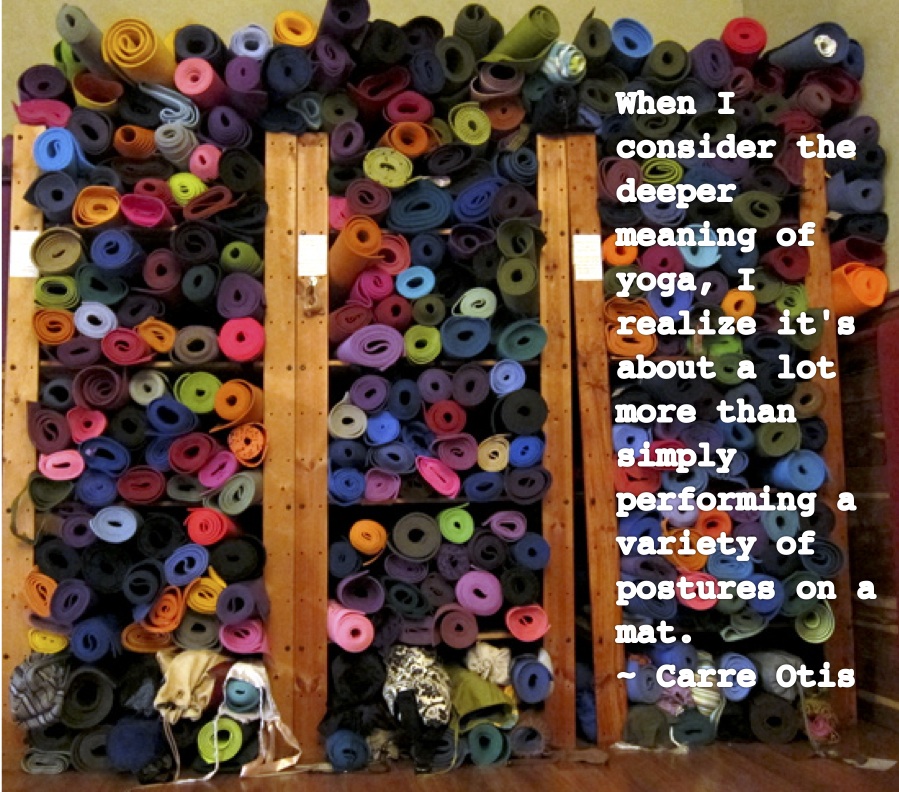Blog-asana: Words on Yoga
A Mat to Stand On

Our yoga mats blend into our daily lives like our shoes or our car keys. They're special, we pay attention to them, yet they're totally normal; but the yoga mat has a unique history, which we almost never stop to think about.
The oldest yogic practices were done on either grass, packed earth, or an animal skin rug. Later, as yoga came to the west, practitioners started using cotton towels to prevent slipping on wood floors. A little later, a thin rubber pad was used in between the cotton towel and the floor to prevent the towel from slipping (notice a pattern?). In the early 1980's, a teacher in Germany cut a piece of carpet padding - you know, that grippy but foamy layer that goes underneath household carpets - to the size of a towel and used that. Later, she sent the dimensions to a padding manufacturer and voila, the first sticky mat was created.
Sticky rubber mats have gone through many incarnations over the last thirty years, and there are arguments for closed- or open-celled foams, eco-consious materials, wider or longer dimensions, and the general width or thickness of padding. Still, even with all the research and practical review that goes into the development of new styles of mats, we still find ourselves slipping and sliding during some practices.
For a long time I thought the answer was a better mat. Thicker, stickier, uber-yoga-mat! When I had the perfect mat, I wouldn't slide around anymore, right?
Recently, in a conversation with another yogi, I heard the words "Sometimes the slipping and sliding doesn't need to be offset by a stickier mat, but my more work." It was an option I hadn't considered before: clearly gravity and physics were the enemy, not how my body was executing the pose. Yet, when my back foot starts sliding in a deep crescent pose, instead of pushing, it was recommended that I try to PULL, using the insides of the legs to try to draw the feet closer together and that way balance the already strong energy pushing out my back heal and through my front knee.
I'd never felt a more dynamic expression of the pose in my life - nor has crescent ever made my legs that tired - but I did stop sliding.
Sometimes we focus too much on making everything "just so", in our lives and our practice. I can't imagine trying to stay in a stable asana for five breaths while practicing on a deerskin rug or on dusty clay soil, but maybe that's the point - the asana is divorced from its surroundings, and is about the practitioner rather than the props.
The next time you get into a pose and you find yourself slipping, imagine that you stand on a mat of woven grass, or a cotton towel, or just a bare spot of dirt. Look inward, and balance against your strength, rather than against the stickiness of your mat.
Have a good week!
Namaste.
